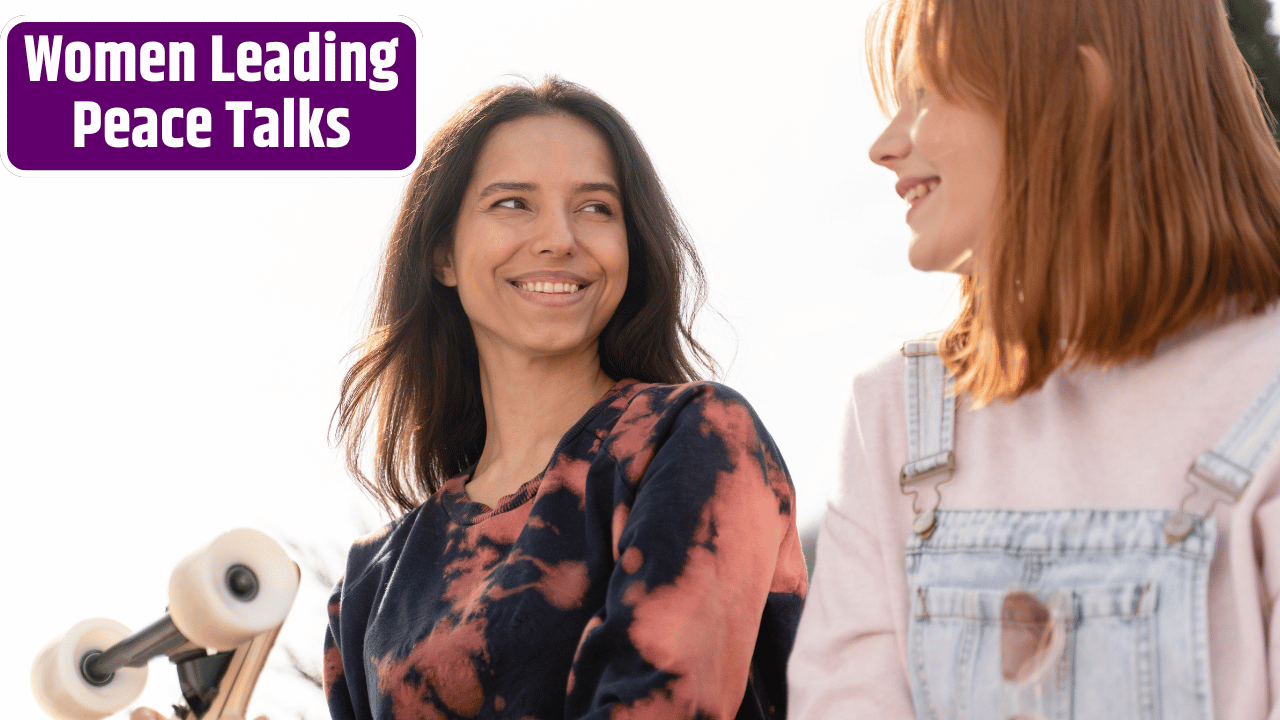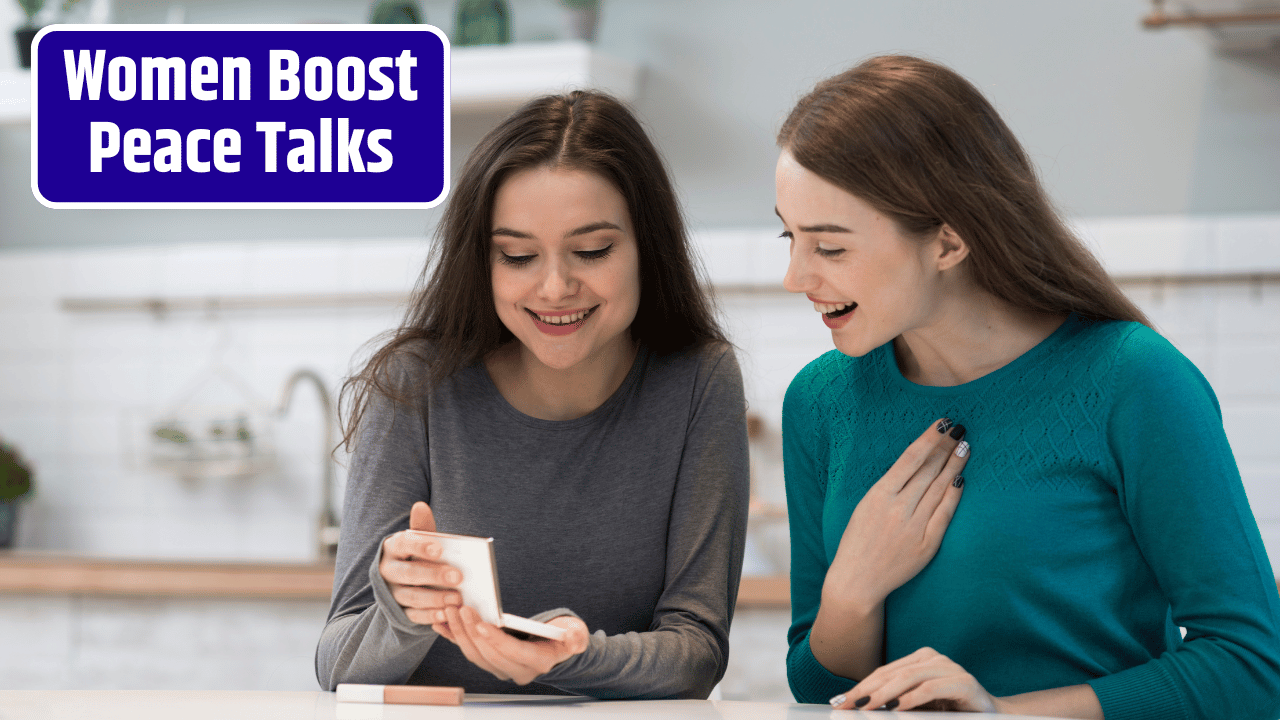You ever notice how when a conflict flares up—whether it’s a geopolitical mess or a boardroom blowup—the first instinct is to send in the usual suspects? Suits, handshakes, “mutual interest” jargon, rinse, repeat. But here’s a wild idea: what if we stopped ignoring half the damn population?
Women have been holding families, communities, and even empires together since forever. And yet, when it’s time to sit at the negotiating table, their chairs are either missing or symbolic. That’s not just unfair—it’s inefficient, and frankly, dumb.
Let’s talk about why peace processes need fewer power plays and more empathy. Fewer egos, more emotional intelligence. Fewer warlords, more women.
Table of Contents
The Numbers Don’t Lie. But They Sure Are Sad.
Pull up a chair, because this stat’s gonna knock you over: Between 1992 and 2019, women made up just 13% of negotiators, 6% of mediators, and 6% of signatories in major peace processes. Six percent. You couldn’t even field a basketball team with that.
Meanwhile, research keeps shouting into the void: when women are included, peace is 35% more likely to last at least 15 years. That’s not a rounding error—that’s the difference between a fragile ceasefire and a durable, generational peace.
Here’s a quick snapshot:
| Role in Peace Process | Men | Women |
|---|---|---|
| Lead Negotiators | 87% | 13% |
| Mediators | 94% | 6% |
| Peace Agreement Signatories | 94% | 6% |
Source: UN Women, Council on Foreign Relations
So… what’s the hold-up?
The Soft Skills That Could End Wars
You know that phrase “she’s too emotional”? Yeah. Turns out, emotional intelligence is a superpower in mediation. Negotiation isn’t just strategy and talking points. It’s listening between the lines. It’s knowing when to push and when to pause. It’s navigating grief, rage, trauma—all the messy stuff that spreadsheets don’t track.
Women, statistically, bring higher collaborative instincts, conflict de-escalation, and community-focused thinking. This isn’t feel-good fluff. It’s battlefield-tested reality.
In Liberia, for instance, women—led by Leymah Gbowee—literally formed a human chain around peace talks in 2003 to force progress. That movement helped end a brutal civil war and earned her a Nobel Peace Prize. Meanwhile, men in the room were still debating the lunch menu.
More Than Just a Seat at the Table
Representation isn’t just about quotas. It’s about changing the tone of the room.
When women participate, issues like sexual violence, refugee displacement, education, and healthcare actually make it onto the docket. Shocking, right? Turns out, when you include people living the realities of conflict, you get more practical, lasting solutions.
And let’s be real—men have been at the helm of nearly every major conflict since… well, always. Maybe it’s time to try a different pilot?
The Gatekeepers Need to Step Aside
Part of the problem? The old boys’ club is still holding the keys.
International peace efforts are often run by governments, think tanks, and security councils that skew heavily male. Even when women are present, they’re sidelined into “humanitarian” or “soft” issues instead of given influence over the core political deal-making.
That’s like asking someone to decorate a house they weren’t allowed to help build.
We don’t just need women in the room. We need women leading the room. Shaping the conversation. Driving the agenda. Signing the agreements.
This Isn’t Just a Feminist Issue—It’s a Global Survival One
The stakes? Oh, just peace, war, and the future of international cooperation.
Inclusive peacebuilding isn’t a “nice-to-have” anymore. It’s mission-critical.
Conflicts today are more complex than ever—climate refugees, cyber warfare, resource scarcity. These aren’t problems you solve with chest-pounding and airstrikes. They require diplomacy that sees the whole picture. Voices that don’t just echo past mistakes.
And those voices? They sound a whole lot like women.
In a Nutshell (And a Half-Eye Roll…)
The world’s got 99 problems, and a lack of testosterone in peace talks ain’t one. If you want peace that sticks—not just a pause between rounds of violence—you need to center the people who know how to build bridges, not just blow them up.
It’s not about being “nice.” It’s about being effective.
So next time someone scoffs at the idea of women leading peace negotiations, ask them: “How’s that all-male track record working out for ya?”
FAQs
Isn’t it about merit, not gender?
Absolutely. So let’s stop pretending like men automatically bring more “merit” to the table. If we judged by results, women would already be running the show.
But are women interested in these roles?
Hell yes. What they often aren’t given is access, support, or protection. Many women activists risk their lives just to be heard. They’re more than interested—they’re invested.
Doesn’t emotional involvement cloud judgment?
Nah, it enhances it. Mediation isn’t a logic puzzle—it’s human beings trying to move past trauma. Empathy is a tool, not a weakness.
Are there examples beyond Liberia?
Tons. Colombia’s peace process, Northern Ireland, Bougainville. In each case, women’s groups were key to creating inclusive, long-term peace frameworks.














